Have you ever wondered why some exercises are considered better for your back than others? Or do you want to understand your back better and have some good strategies to protect your back while exercising or working?
Your spinal joints are small with sensitive nerve structures while your feet, knees, and hips are big with less sensitive structures and more suitable for weight bearing and movement. Learning to move with your feet, knees, and hips while keeping your spine stable is the key concept of core training and protecting your back.
In this series of articles I will discuss the anatomy of your low back, common causes of conditions like arthritis and other low back pain, and the big idea of core training and some things to avoid for your low back.
Your Spinal Cord: Protects and Provides Movement
The main purpose of your spine is to protect your spinal cord. Your spinal cord is the direct link from your brain to the rest of your body. Nerves in various parts of your body tell your brain about what’s going on in that part of the body and send the information to your brain. Your brain then issues a response to that body part.
In short, your nerves relay important information about the state or health of your body and send it to your brain while your brain figures out what to do about the information.
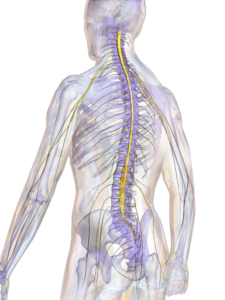
However, the spine also allows for a great deal of movement. Much of the current research on low back pain has shown that certain movements may cause undue stress on structures of your spine and lead to pain. This article explains how those movements may lead to certain types of degenerative changes to your spine.
Your Spinal Joints
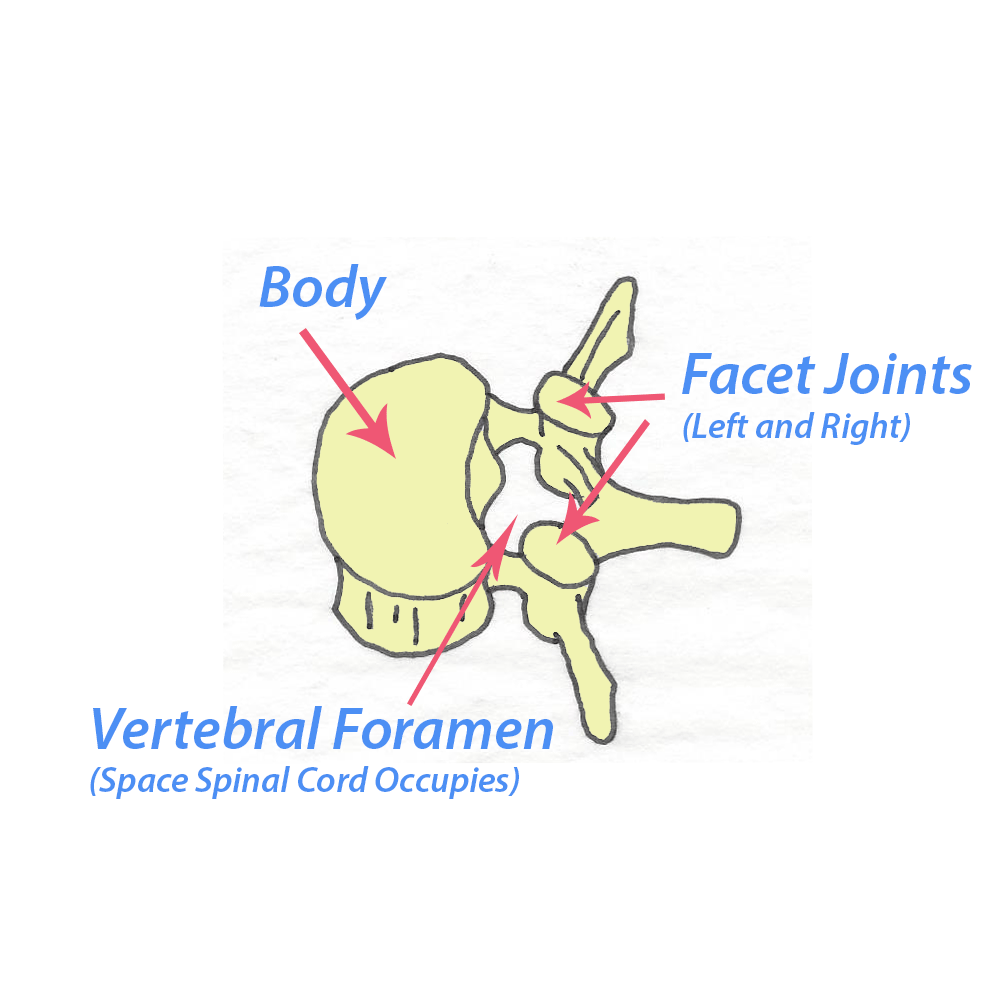
The vertebrae are the bones of your spine. It has a body which your disc joint occupies. Your spinal cord runs through the vertebral foramen. Your facet joints help guide movement.
Your spine is made up of 26 bones called vertebrae and are stacked on top of one another. When these two bones come together it makes your spinal joint. One segment of your spinal joints has 3 joints. The lower facet joint which fits into the upper facet joint of the vertebrae below it. The disc joint fits between each vertebrae. The disc joint is made of cartilage material and has a jelly like center called the nucleus pulposis.
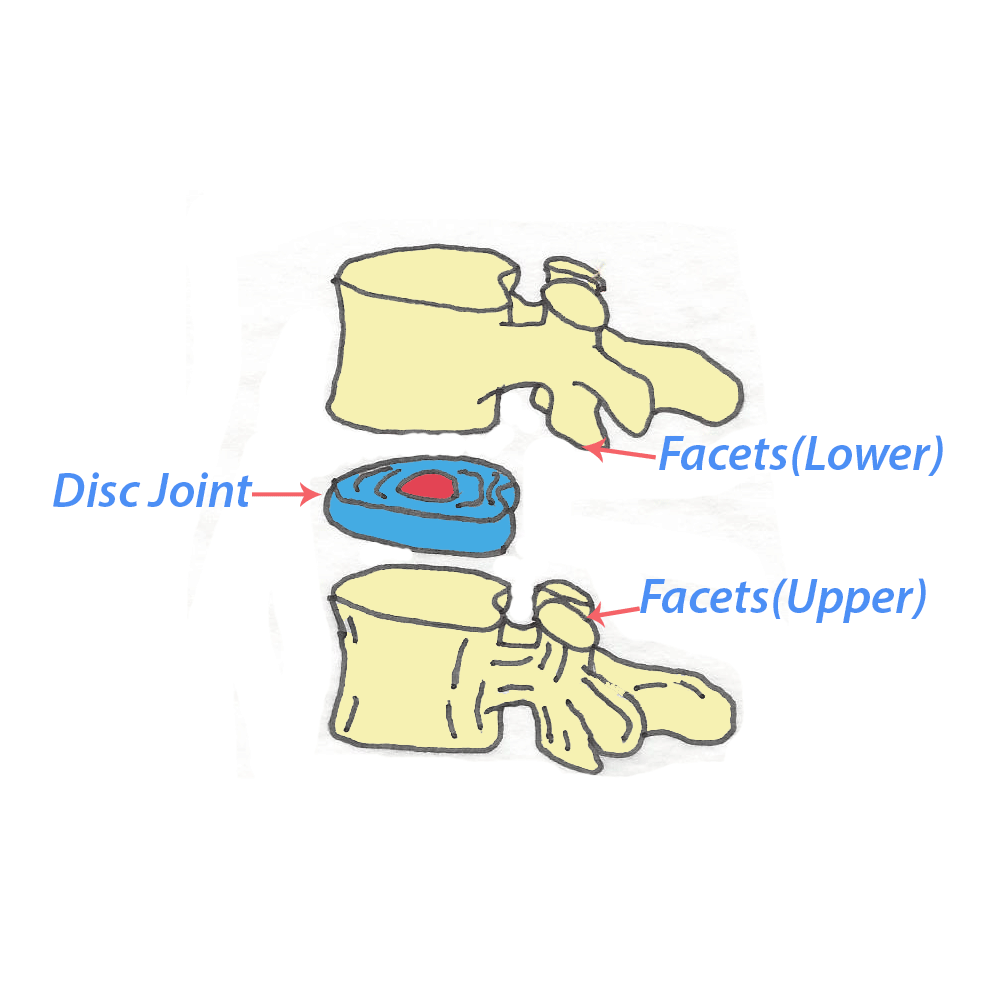
Your disc joint provides cushioning between each vertebrae, absorbs shock, and allows space for the nerves exit through the intervertbal foramen.
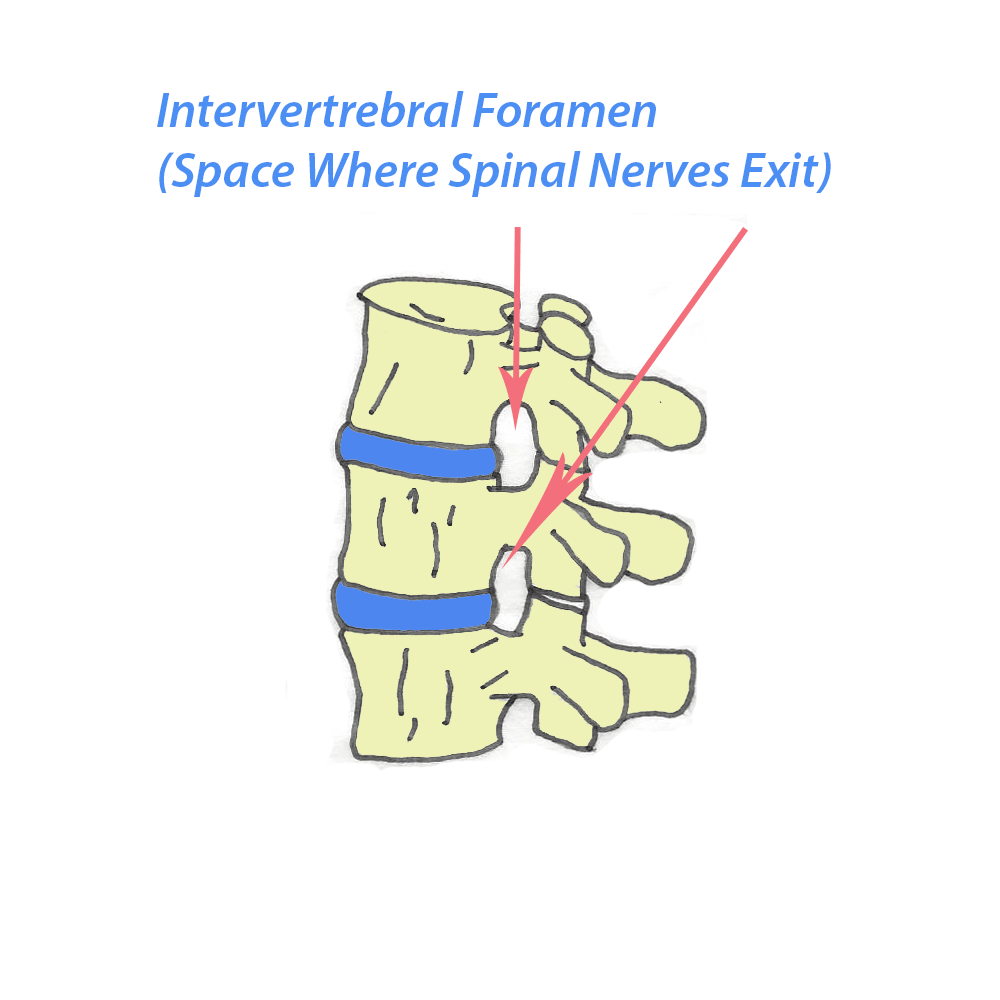

Your spinal cord travels through the center of your vertebrae. The nerves branch off from your spinal cord through the inter-vertebral foramen. Where the nerves exit they are called nerve roots.
The natural curves in your spine allow weight bearing forces and shock to go through the large portion of your vertebrae and through your disc joints.


If the weight of your spine goes towards the back onto your facet joints this places too much stress on the weak part of your spinal joints, the facet joints. As you can see the disc portion is much larger than your facet joints.

When your body weight travels through your facet joints instead of the large body of your vertebrae this may lead to arthritic changes such spondylosis, spodylolysis, spondylolisthesis, or stenosis
When the weight goes towards the facet joints this can lead to uneven distrubution on the smooth cartilage surfaces which could lead to bone spurs in the facet joints and arthritic changes in your joints.

Wearing down of your cartilage surface of your facet joints can lead to formation of bone spurs. Sometimes the bone spurs may form in the inter-vertebral foramen and narrow the space from which your spinal nerves exit. The bone spurs may impinge the spinal nerve root
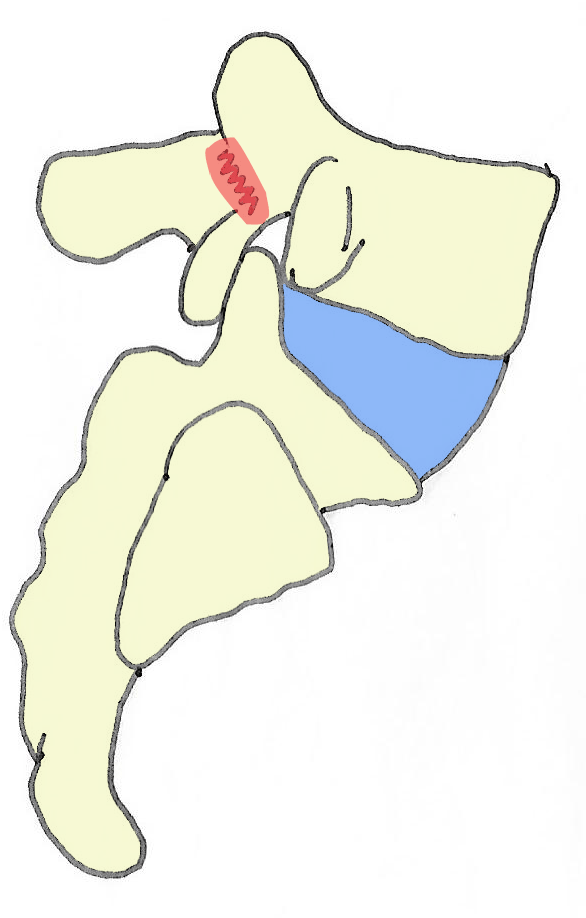
When the weight distribution is borne through your facet joints this may lead to stress fractures of the pars interarticularis.
When the weight is on the facet joints this may also lead stress fractures in the pars intarcularis and leads to an arthritic condition known as spondylosis. Over time these stress fractures can lead to a breaking off and a condition known as spondylolisthesis.
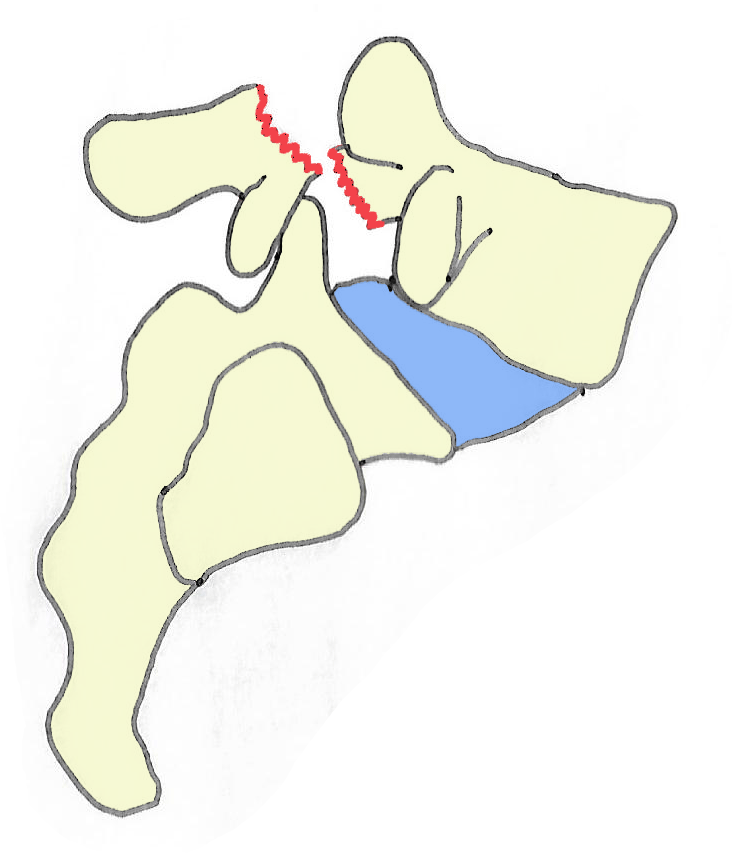
Stress fractures in the pars interarticularis may lead to a a breaking of the bone and the vertebral body slips forward. This condition doesn’t always cause pain. In most cases it just causes major stiffness in your low back and limited range of motion. It will cause pain when the body presses on nerves
This can occur in a postural condition known as lower crossed syndrome in which your pelvis rotates forward and increases the arch in your low back. This increased arch places much of the weight bearing of your spinal joints onto your facet joints and the back portion of your discs.
With the weight placed on the back portion of your discs this may wear down the fibers of your disc joints. In forward bending movements the thinning of your disc may make it easier for the jelly like center push through the fibers of the disc leading to disc herniations. With the decrease in disc height it also decreases the space in which your spinal nerves exit.
Movement of Your Spine
In flexion, where your body bends forward, your vertebrae and disc joints are pushed back toward your spinal cord. However, your spinal cord is protected by your posterior longitudinal ligament but repeated and forceful flexion movements could cause the disc to break through the ligament.
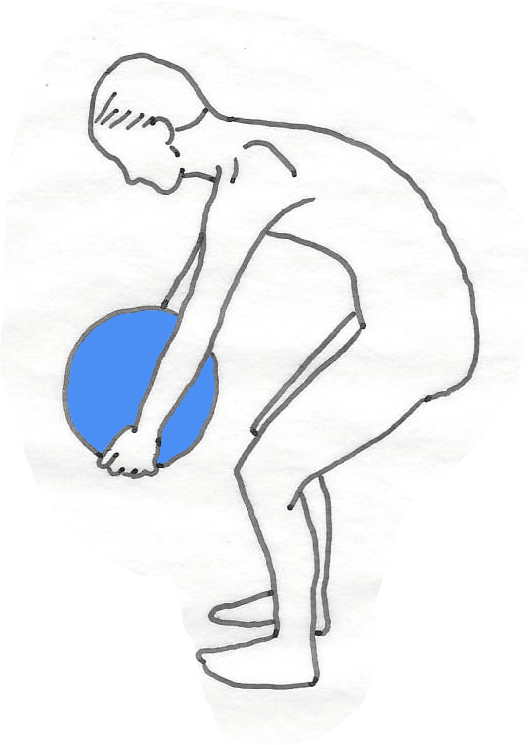
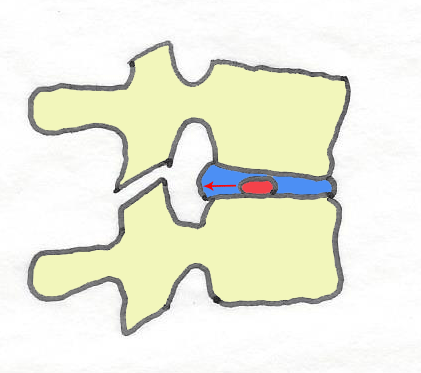
In flexion your discs are pushed back. This completely normal spinal mechanics. However, repeated and forceful flexion movements may tear through the posterior longitudinal ligaments and press on your spinal cord.
Extension, your body bends back ward, your disc material goes forward and your facet joints are brought closer together. This decreases the space where your spinal nerves exit.

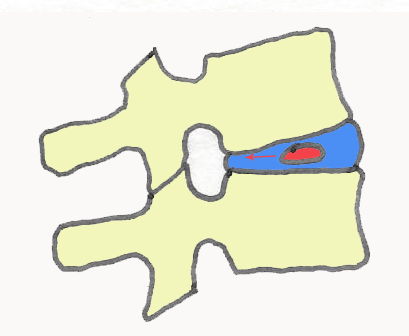
In extension your facet joints come closer together. This closes up the inter-vertebral foramen space. Forceful and repeated extension movements may wear down the smooth cartilage surface of your facet joints and lead to bone spurs and narrowing of the inter-vertebral space.
Side bending, the disc material goes either left or right. Side-bending left makes the disc go right and vice versa. Side-bending coupled with flexion could be problematic as it pushes the disc material toward your spinal nerves and this is often where bulging discs occur and pinch your nerves.
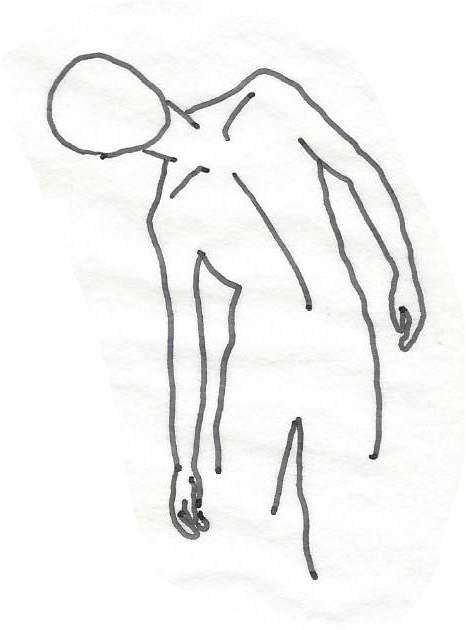
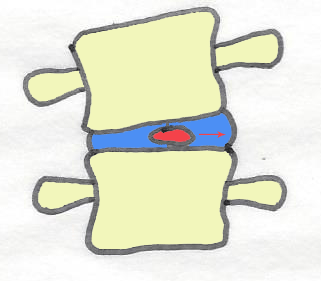
Side bending pushes your disc out the side. This brings your disc closer to your nerve roots. Side bending paired with flexion increases the chance of your disc pressing on nerve roots.
In rotation your disc fibers are stretched on one side while others are relaxed. This doesn’t cause much of a problem to the discs.

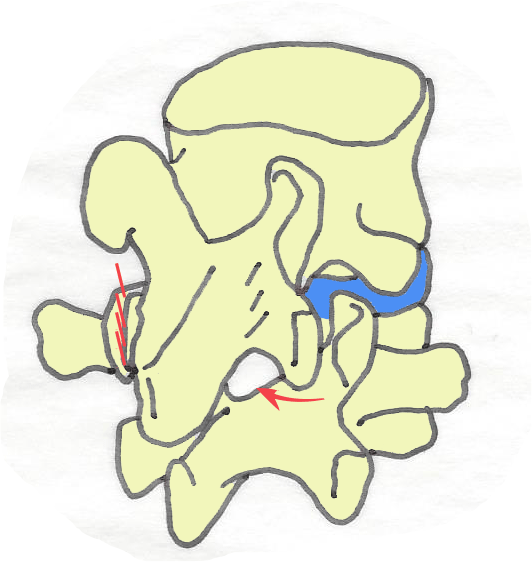
However, one side of your facet joints are brought closer to the same side and your facet joints could jam causing pain. This is common in sports that may require rotation such as golf.
The Base Your Spine Sits On: Your Pelvis
Your sacrum, the tail end of your spine, is wedged between your two pelvic bones. This area of your low back and hips needs to be very stable since many important nerves travel out of this area. Therefore it has many ligaments that hold it together as well as many muscles that help with the stability of this area. Where your sacrum fits into your two pelvic bones is known as the sacro-iliac joint.
Two important actions that happen at your sacro-iliac joint are anterior and posterior rotation. When your hips rotate anteriorly, or forward, this increases the arch in your low back.
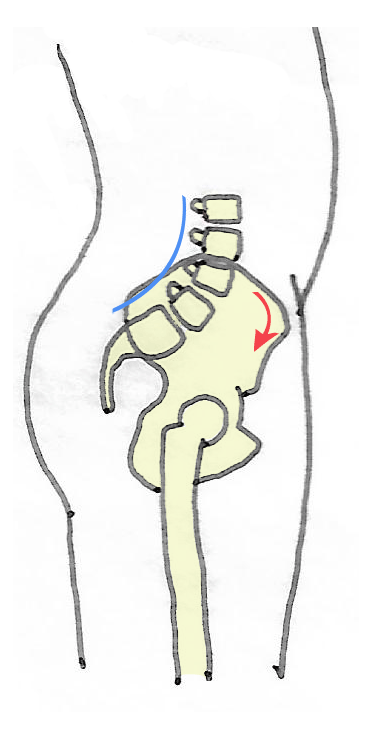
An increase in the arch of your low back increases the pressure on your facet joints and disc joints. This leads to decreased space that your spinal nerve roots exit and increases chances of arthritic changes to your spinal joints.
When your hips rotate posteriorly, or backward, this flattens the arch in your back.
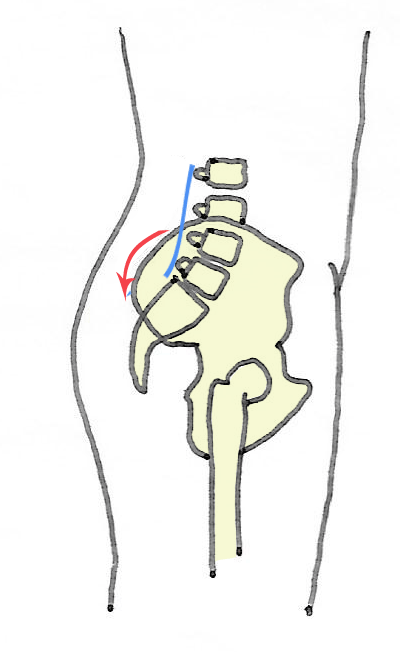
Posterior rotation may result in a flat back which puts your joints in a slightly flexed position. This places stress on your disc joints and ligaments
These motions are important for the walking cycle. As one leg comes forward that same side hip rotates back and when the other leg extends your pelvic bone rotates forward.
Sometimes the surface of your hip bone may jam into your sacrum. This often leads to low back pain that may feel local in the small of your back, in your buttocks, or may refer down into your leg.
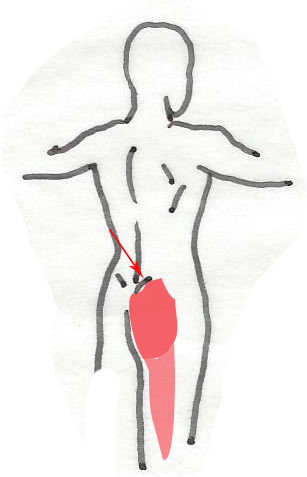
Your sacro-iliac joint can be seen as the indent or dimples in your low back. The jamming of the pelvis on the sacrum or the sacrum on the 5th lumbar vertebrae can cause local or referred pain.
It is sometimes thought or recommended that doing pelvic rotations can be helpful for low back pain conditions. But many experts seem to suggest that is not recommended but instead teaching your body how to hold a neutral spine and keeping your spine stable during movement is more important.
This is because rotating or tilting your pelvis changes the curve in your low back causing your spine to be flexed or extended. Training the muscles of your spine to hold your spine in neutral is more desirable since many of the muscles that do that action also help to rotate your pelvis.
As you can see your low back is made of many parts and has very sensitive structures that you don’t want damaged.
When you move your legs the muscles of your low back need to be able to fix or stabilize these small joints creating a solid trunk and base. With your low back strongly stabilized this allows for a stronger base for your limbs to move and protection of the sensitive structures in your low back.
Don’t Get Too Hung Up On Posture
There are studies that suggest posture and pain are poorly connected. So it is important not to let it rule your life or freak you out. However, I think to completely ignore it is not wise either. I mostly wanted to explain some important concepts of spinal motion so you could get an idea of how it works. I thought it would also be good to share how spinal motion works for those that do have some of these conditions and you could see how how some exercises may affect these conditions.
I hope you found this article helpful. Look out for my next article on how to protect and keep your low back healthy.
 Matthew Snow is a Licensed Massage Therapist in Cos Cob, CT. If you would like to schedule or make an appointment call (203) 936-6379 or email hello@h2tmuscleclinic.com.
Matthew Snow is a Licensed Massage Therapist in Cos Cob, CT. If you would like to schedule or make an appointment call (203) 936-6379 or email hello@h2tmuscleclinic.com.

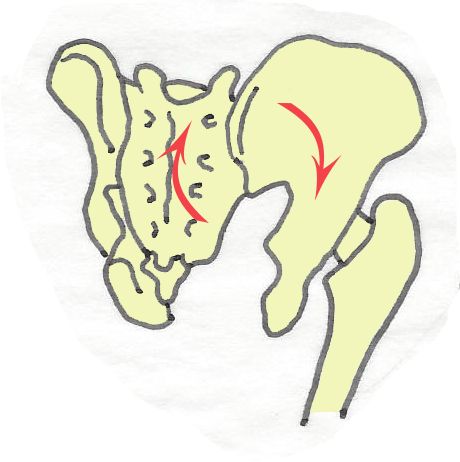
Leave A Comment